#access to ICT and connectivity
Explore tagged Tumblr posts
Text
Action ensuring that all educational responses are based on the fundamental principles of inclusion, equity, and non-discrimination.
youtube
A report issued by the InterAmerican Development Bank (IDB) and the Regional Bureau for Education in Latin America and the Caribbean (OREALC/UNESCO Santiago) warns of the unequal access to human and economic resources, infrastructure and educational equipment in the region, which have been aggravated by the pandemic.
These structural conditions affect the implementation of the recommendations issued by international organizations on the appropriate processes for school reopenings, and impact upon the right to education of millions of students in the region.
"The region has an urgent need to plan and define priority actions to guarantee the safety of school operations and educational attention to the most vulnerable populations". This is the conclusion of the IDB and UNESCO report "Reopening Schools in Latin America and the Caribbean: Keys, challenges and dilemmas to plan for a safe return to in-person classes". The report was launched by both international organizations on Monday, December 7th, 2020 at an online event. The English version is available since January 20th.
The document presents an assessment developed by both institutions as a contribution to the prioritization of education in national response plans to the health emergency and future recovery strategies. "Countries have deployed various response and recovery plans in which education needs to be incorporated as a central element," the report says, "not only to ensure an education response, but to achieve an equitable, inclusive and sustainable recovery”.
The report points out inequality increases the challenge of developing an education strategy that integrates educational experiences of 2020 - and that recovery of students who have not returned to school will be difficult. For this reason, the document also calls for regional action ensuring that all educational responses are based on the fundamental principles of inclusion, equity, and non-discrimination. To this end, the report analyses the possibilities, restrictions and needs that Latin American and Caribbean countries will face during the process of returning to in-person classes, considering the following dimensions: safe schools (school infrastructure, access to water and sanitation); human resources (principals and teachers); remote education (access to ICT and connectivity; education financing; and information and planning.
In their conclusions, both organizations indicate that the responses that the countries have implemented to guarantee continuity of learning reflect a remarkable capacity to react to an uncertain scenario, but that there are difficult decisions to be taken as soon as possible, as the longer the return to in-person classes is delayed, exclusion will grow and inequalities will increase.
Within these decisions, UNESCO and the IDB call for investments to improve the state of school infrastructure to ensure conditions for basic sanitation and hygiene. They also call for careful planning of the demand and supply of teachers for the return to classes and emphasize the urgent need to improve policies on teacher training, availability, allocation and working conditions.
In terms of information and communication technology (ICT) and learning continuity during the pandemic, the report emphasizes inequalities among students in access to educational options in terms of technology during a pandemic and the enormous challenge for educational continuity, especially in rural areas. This period has also highlighted disparities in teachers' ICT skills, which require sustained policies that transcend the crisis.
With regard to education financing, the IDB and UNESCO state that the recovery of the education sector will require additional resources, as well as improving their distribution. Huge inequalities highlight the need to incorporate equity criteria and the prioritization of vulnerable populations.
In order to build more comprehensive education systems that will allow dealing with crises such as this one, it is also essential to modernize the collection and analysis of information and to make these systems more efficient Currently, there are marked gaps in comparable data from all countries on key indicators for planning the return to in-person classes. In many cases these gaps reflect basic information that is not available at the national level.
Sabine Riegle-Aubourg, Director (a.i.) of the Education Division at the IDB says this report is "a wake-up call about the urgent need for careful education policy planning. The ability of countries to define priority actions to ensure safe school operations and prioritize education for the most vulnerable populations will be key. In order to do this and to avoid a generational disaster, education funding must be protected”.
This diagnosis gives an account of the challenges faced by the education systems in the region, which have been deepened by the COVID-19 pandemic. This is why today, more than ever, we must maintain our commitments for the Agenda 2030 for Sustainable Development and its Goal 4. Adequate, timely and efficient investment will be crucial to reducing the current and future impacts of the pandemic on education and to avoid a generational catastrophe;
Claudia Uribe, Director of the Regional Bureau for Education in LAC (OREALC/UNESCO Santiago).
Even before the sanitary emergency, education systems faced major challenges. In 2018, 10.5 million children were out of school in Latin America and the Caribbean, 16% of them outside primary education, 22% without lower secondary education and 62% without upper secondary education. In addition, a large number of students in the region do not achieve basic learning competencies according to the results of PISA (OECD) and the Third Regional Comparative and Explanatory Study (TERCE), implemented by UNESCO.
The conclusions
Safe schools (school infrastructure, access to water and sanitation)
The COVID-19 pandemic has exposed structural shortcomings in school infrastructure.
Most schools in LAC countries do not have the classroom size conditions that allow for the enforcement of the physical distance protocols for a safe return to in-person classes for every student. Around 1.3 million students at the primary level do not have access to drinking water in their households nor in school. It is urgent that LAC countries invest in the improvement of the state of school infrastructure to offer basic sanitation and hygiene conditions.
Human resources (principals and teachers)
Constraints on the return to in-person classes for some teachers and the implementation of hybrid models will require the need to hire new teachers. However, even before the pandemic, many countries already faced a shortage in trained staff to cover the education needs of the population. The region needs to plan the supply and demand of teachers carefully in order to return to in-person classes; the pandemic has brought to light the urgent need to improve training, availability, allocation and working condition policies for teachers.
Remote education (access to ICT and connectivity)
The most utilized resource in the region for remote and hybrid education are online platforms, employed by 85% of countries. However, access to connectivity and technological resources in households and in schools are deficient: 46% of children between 5 and 12 years of age live in households without Internet connection. In terms of schools, 62% of primary schools and 75% of secondary schools have access to ICT equipment. This represents a huge challenge for learning continuity, especially in rural areas. The pandemic has highlighted the disparities in ICT competencies among teachers, this requiring sustained training policies that go beyond the urgency of the current situation.
Education Financing
The recovery of the education sector will require additional financial resources and better distribution. The large inequalities highlight the need to include criteria of equity and prioritization of vulnerable population in plans to return to in-person classes for students currently out of school. In this sense, education financing as well as fair and efficient resource allocation are key to respond to this crisis and to guarantee the right to quality education for everyone.
Information and planning
Ministries of education require strong education management information systems (EMIS) that allow for the planning, development, and management of these strategies. 42% of LAC countries still use physical formats (such as paper forms) completely or partially to gather data. The EMIS of the region need to be strengthened through the use of technologies to collect and analyze data more effeciently, allowing ministries to build a more comprehensive picture of their education systems to deal better with crises.
Further information:
Download the report (it includes executive summary)
Blog, OREALC/UNESCO Santiago ¿Están preparados los países de América Latina y el Caribe para abrir sus escuelas?
Webinar
#Education#Covid-19#Region: Latin America and the Caribbean#UNESCO Office in Santiago and Regional Bureau for Education#Remote education#access to ICT and connectivity#Youtube
0 notes
Text
HRH THE PRINCESS ROYAL CONCLUDES HER VISIT TO SRI LANKA

Her Royal Highness, The Princess Royal and her spouse Vice Admiral Timothy Laurence concluded a three-day official visit to Sri Lanka on Friday, 12 January 2024. The visit marked a momentous occasion celebrating the 75th Anniversary of bilateral relations between Sri Lanka and the United Kingdom and was characterized by a series of engagements that reinforced the deep ties between the two countries.

Upon their arrival on 10th January, a vibrant ceremony with a multi-cultural performance welcomed them, with Foreign Minister Ali Sabry extending warm greetings.
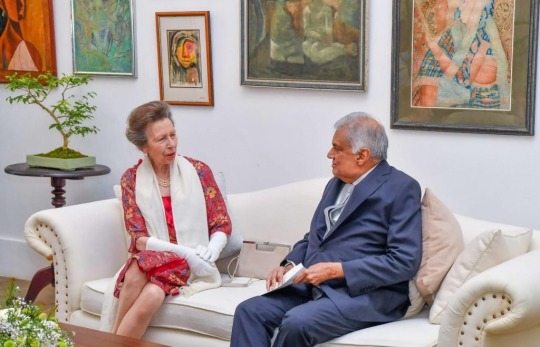
Visiting at the invitation of the Government of Sri Lanka, the official engagement kicked off with a welcome dinner hosted by President Ranil Wickremesinghe, reflecting the warm and cordial relations shared by the two countries during which Princess Royal delivered a message from His Majesty the King to the President and the people of Sri Lanka.
Addressing a gathering at the concluding reception hosted by the British High Commissioner, The Princess Royal remarked on the warm and friendly bilateral relations between the two countries and was committed to fostering cultural, economic and social connections. Foreign Minister Ali Sabry who delivered a short speech during this reception, remarked that the visit held profound significance and is a watershed moment in the 75 years of our bilateral relations with the United Kingdom. He also drew attention to the significant transformation Sri Lanka has undergone since The Princess Royal’s last visit in 1995. The Minister thanked the UK for its steadfast support for the pursuit of development and prosperity in Sri Lanka.

In Colombo, as the patron of the Save the Children Foundation, Her Royal Highness visited its office and unveiled a plaque commemorating the 50th Anniversary of ‘Save the Children’ working in Sri Lanka, and undertook a visit to the Lady Ridgeway Hospital for Children, showcasing the commitment to social causes.

Additionally, The Princess Royal toured the ‘MAS Holdings’ facility in Katunayake, a leading apparel tech company in South Asia as identified by the UK Fashion and Textile Association (UKFT), of which The Princess Royal is the President. During the tour she witnessed the state of the art technology and capabilities of the Sri Lankan apparel sector, reinforcing its role in Sri Lanka – UK trade relations.
The itinerary extended to Hatch Works, Colombo, an ICT innovation hub supporting start-ups, further highlighting the collaborative efforts in technological advancements and the promotion of entrepreneurial culture through facilitating access to essential infrastructure, knowledge, and capital. At the British Council, HRH was briefed on the ongoing work to build cultural and educational relationships between Sri Lanka and the UK and was privy to ‘The Arches of Awe exhibition’, featuring images of 21 arches built to welcome Queen Elizabeth II to Sri Lanka in 1954. As the President of the ‘Commonwealth War Graves Commission’ Princess Royal also visited the Commonwealth War Graves at Liverament Cemetery and laid a wreath to commemorate the dead in the aftermath of both World Wars I and II, symbolizing shared history and values.

Moving to Kandy, the royal guests were welcomed by the Central Province Governor Lalith U Gamage, and were escorted to the sacred temple of the ‘Tooth Relic’, where she paid her respects.
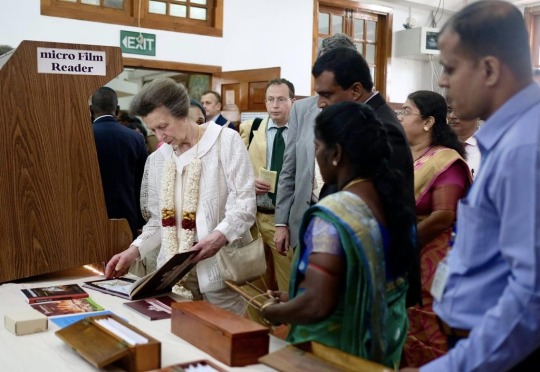
HRH The Princess Royal and Vice Admiral Timothy's visit to Jaffna marked a historic occasion, as the first-ever visit by members of the British Royal Family, where they were received by Northern Governor P. S. M. Charles. In Jaffna, the focus shifted to important aspects of post-conflict recovery visiting the Muhamalai Demining site and meeting communities resettled in mine–cleared areas in Muhamalai, signifying and reiterating the valuable contribution of donor partners, including the UK in creating a mine - free Sri Lanka. The Royals were also taken on a tour of the Jaffna Public Library recognized as a center for knowledge and cultural preservation, and met members of the local community.

During their visit, the Royal Guests also toured the Vajira Pillayar Kovil, and took part in a special pooja blessing conducted by the chief priest. Princes Royal visited the ‘Mission to Seafarers’ as the President of this movement and had an engaging conversation with its Colombo staff reiterating the importance of seafaring to Sri Lanka as a maritime nation.

The Princess Royal first visited Sri Lanka in 1995 and this year marked her second to the Island. Sri Lanka has received members of the Royal family on seven previous occasions since 1948, including , Her Late Majesty Queen Elizabeth II who visited the island just five months after her Coronation, and that of His Majesty the King, as the Prince of Wales on three occasions.

The Ministry of Foreign Affairs worked in close coordination with the British High Commission in Colombo, which played a pivotol role in the execution of the programme assisted by the Sri Lanka High Commission in London and all other local government agencies. This historic visit by HRH The Princess Royal led to a comprehensive exploration of the diverse facets of the relationship between Sri Lanka and the United Kingdom.
Posted by Ministry of Foreign Affairs, Colombo on 13th January 2024
38 notes
·
View notes
Text
જ⁀➴°⋆ 𝐇𝐨𝐰 𝐈𝐂𝐓 𝐡𝐞𝐥𝐩𝐞𝐝 𝐦𝐞 𝐚𝐭 𝐡𝐨𝐦𝐞, 𝐢𝐧 𝐬𝐜𝐡𝐨𝐨𝐥 𝐚𝐧𝐝 𝐢𝐧 𝐜𝐨𝐦𝐦𝐮𝐧𝐢𝐜𝐚𝐭𝐢𝐧𝐠 𝐰𝐢𝐭𝐡 𝐩𝐞𝐨𝐩𝐥𝐞 ! ˚˖𓍢ִ໋ 🌷͙֒ ✧ 🩷 ˚. 🎀⋆
━━━━━━━━ ˗ˋ ୨୧ ˊ˗ ⋆˙⟡ ━━━━━━━━
ICT stands for “Information and Communication Technology”. It refers to all Technology used for communications, internet, phones, computers and many more. It’s an efficient & important part of technology, having many contributes to our society and in our lives — including in homes, schools, and communication with other people.
𝑨𝒕 𝒉𝒐𝒎𝒆, ICT allows my whole family to have a quick access to the internet. It’s not just about using a computer, it helps us use everyday equipments and everyday digital gadgets— therefore helping us do our tasks easily. As my mom works from home, and my sister is a college student, my dad an office employee, ICT helps us do our works by just facing a digital device and getting things done. This technology also helps whenever we are buying things online that is needed for the house. Overall, it gives us a helping hand as a family to be able to do our works, with each of us contributing to the family but also helps us bond together lovingly!
However, I as a junior high-school student, is often busy and even sometimes stressed because of my difficult lessons 𝒂𝒕 𝒔𝒄𝒉𝒐𝒐𝒍 ! Luckily, ICT is a great assist for me. I can use ICT to research and study a lesson topic, making it a huge help for me whenever there are quizzes near or just want to advance study. It provided access to a wider and more flexible range of learning materials and really helps me to have a good performance at school.
𝑰𝒏 𝒄𝒐𝒎𝒎𝒖𝒏𝒊𝒄𝒂𝒕𝒊𝒏𝒈 𝒘𝒊𝒕𝒉 𝒐𝒕𝒉𝒆𝒓 𝒑𝒆𝒐𝒑𝒍𝒆, we can easily messaging and video-call our loved ones through ICT. Communication is easy because even if they are far away, we can talk to them instantly with apps and tools. It’s a quick and easy way, with ICT transforming the way we talk but in a good way— as it has broken down barriers of distance and time. With it, it’s easier to connect to people always.
ICT has greatly improved how we live, learn, and communicate. It makes life easier at home, helps students and teachers in school, and keeps people connected with family and friends. We wouldn’t have achieved what we have today without the use of it, and I will continue to use it properly and responsibly! It’s a great piece of technology to learn and be an important part of our lives.
꒷꒦︶꒷꒦︶ ๋ ࣭ ⭑꒷꒦ °❀⋆.ೃ࿔*:・°❀⋆.ೃ࿔*:・꒷꒦︶꒷꒦︶ ๋ ࣭ ⭑꒷꒦

6 notes
·
View notes
Text
I can’t stop thinking about how Cocomelon is damaging babies because the fast pace scene changes can “interfere with the development of executive functions”, and how thin parents are spread in capitalism that they rely on television to entertain/keep their babies company just so they have some time to complete domestic tasks. I am thinking about disintegrated Community Care/structure. I am thinking about how Instagram, Tiktok, Twitter, Tumblr, all media are engineered to be addictive and alter the executive functioning of kids, tweens, teens, and adults of all ages. How malleable our minds are..bread and circuses. Everything we consume has the power to heal or destroy us. I think about Congress Bill 686, and feel discouraged and powerless. You may have heard of it as “The TikTok Ban” of course, the media intentionally oversimplifies it as a ban on TikTok, but really it is the means for The State to restrict the sharing of information on the internet and to censor us, keep us misinformed and suppressed. The State knows that knowledge is power so they keep us intentionally in the dark and distracted, plucking away human rights one by one while we are watching the stage. The Restrict Act would require the Department of Commerce to “identify, deter, disrupt, prevent, prohibit, investigate, and mitigate transactions involving ICT products and services” 🤳🏼👁️ (ICT means Information and Communications Technology, ICT Products and services refers to social media) When COVID first hit, my friend said “this will be like 9/11, there was the world pre 9/11 and post 9/11” I am not one to believe we are “post-covid” because we are still in the grips of the Covidian information wars, which I feel will be one of the main long term take aways from The-Covid-Years. Bill 686 harms all, because any group of 1 million people organizing or sharing information online can be persecuted, banned and shut down under the guise of “prohibiting certain transactions between persons of the United States and foreign adversaries” Congress Bill 686 establishes both civil and criminal penalties for violations of the bill, meaning anything that they consider an “unacceptable risk to national security.” Please don’t forget we live in a police state which is meant to protect the empire. In The United States privacy is not sacrosanct, and actually American big brother corporations like Meta and Google are investing millions into anti-TikTok propaganda, because it clears their competition and allows them back into the palms of citizens, so they can personally be the ones to steal our time and data. It makes me angry, it’s painful. How can we organize against the faceless enemy? It’s all subversion and censorship, anything to get the undiluted power to be placed back into the hands of an American corporation. It will always be The State, Corporations, and Colleges keeping information tucked away and inaccessible to the masses. We must do what we can to preserve the internet as a place of free information sharing and connection. The infrastructure of our communities in real life are generally weak. Weekly I hit a paywall online, and I have seen my own words be instantaneously given an AI generated COVID misinformation banner before. It’s insane, and most people are not comfortable admitting out loud that we are alive during fascism. What’s funny in a way is, I have long hated TikTok, but now that it risks being banned in this “land of the free” I find myself urgently realizing how important it is to preserve and protect.. It is on the individual to use the internet wisely and with boundaries, not the state to restrict people’s access to information. Privacy is important and data-preservation is important, obviously, but if this is what 686 was truly about, we would be having different conversations. All legislation is created to build a precedent.
88 notes
·
View notes
Text
🗓 » [ n o v . 1 2 , 2 0 2 4 ]
Multiple ways ICT has enhanced my online experience.

( listen while reading ! ) ᵕ̈
- ◌ [ at home ] 🥡

Entertainment -
As a teenager who stays home most of the time, I often turn to the internet to pass the time, unwind, and enjoy myself. The internet offers a wide range of entertainment options that help me relax after a long day or just keep me occupied when I’m bored. For instance, I love watching YouTube videos, where I can find everything from tutorials, vlogs to my favorite music and gaming content. Playing online games is another way I have fun. ✿
Online shopping and banking -
When life gets hectic and busy, ICT makes things much easier, especially when it comes to shopping and managing our finances. Online shopping allows me to browse and buy products without leaving the house, whether it’s clothes, gadgets, or even groceries conveniently. ☆

- ◌ [ as a student ] 🥥
Accessing online information -
With the internet, I can access a wealth of information, ranging from online textbooks, academic articles, and research materials to educational videos, tutorials, etc. This wide variety of content helps me better understand complex topics by providing different perspectives and explanations, allowing me to learn at my own pace.
Virtual Classes -
Whenever face-to-face classes aren't an option, virtual classes become an essential way for me to continue learning. Platforms like Zoom and Google Meet allow me to join live classes from home, where I can still interact with my teachers and classmates, ask questions, and participate in discussions. ☀︎

- ◌ [ in communicating ] 🛩️
Remote communication -
Since my dad is an OFW (Overseas Filipino Worker), I rely on the internet to communicate with him. Through messaging apps like WhatsApp, Viber, and Facebook Messenger, we can chat and share updates anytime, no matter the time zone difference. Video calls on platforms like Zoom or Skype make it even more special, as we can see each other and talk face-to-face, which helps us feel connected despite the distance.
Efficient communication -
ICT helps in real-time communication, making it easier to coordinate and respond quickly, which is crucial for work, school, and staying connected with loved ones.

Overall, ICT has countless applications that make life significantly easier and more efficient in so many aspects. It’s amazing how technology has streamlined so many aspects of life, making daily tasks simpler, faster, and more convenient. I’m sure many of us can agree that ICT has made our lives more connected and efficient. Whether it's for work, education, or personal needs, the ways in which technology improves our lives are limitless, and its role in our day-to-day activities will only continue to grow in importance.
That is all, thank you for reading ♡

4 notes
·
View notes
Text
SMART CITY
A Smart City is an urban development concept that integrates information and communication technology (ICT) and various Internet of Things (IoT) devices to enhance residents' quality of life, improve urban services, and optimize resource efficiency. It is an urbanization that uses innovative technology to enhance community services and economic opportunities, improve city infrastructure, reduce costs and resource consumption, and increase civic engagement. Smart Cities leverage data and technology to address urban challenges and create sustainable, connected, and efficient urban environments.
A smart city is an urban area that uses digital technologies to improve the quality of life for its citizens, promote economic growth, and foster sustainable development:
Uses technology: Smart cities use technologies like the Internet of Things (IoT), artificial intelligence (AI), and data analytics to collect and analyze real-time data.
Improves services: Smart cities use technology to improve services like transportation, water supply, waste disposal, and building lighting and heating.
Enhances the urban environment: Smart cities use technology to create safer public spaces and meet the needs of an aging population.
Promotes economic growth: Smart cities use technology to optimize city functions and promote economic development.
Improves quality of life: Smart cities use technology to improve the quality of life for citizens.
Fosters sustainable development: Smart cities use technology to reduce emissions and improve resource use.
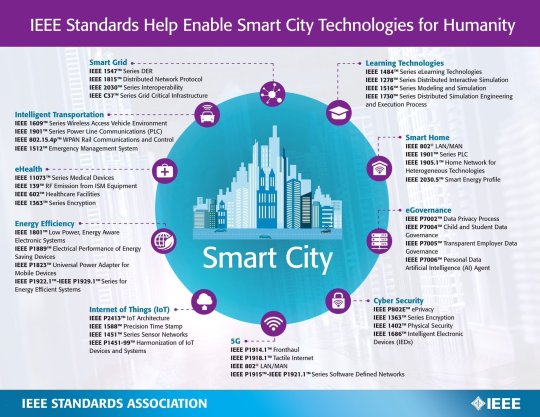
IEEE Standards Help Enable Smart City Technologies for Humanity
As cities transform into vibrant centers of technology and creativity, the vertical skyline emerges as an innovative solution to urban issues. This architectural breakthrough changes our perception of space and relationship with the environment. High-rise buildings featuring green terraces and solar panels create a sustainable landscape within concrete jungles. The vertical skyline signifies the blend of nature and technology, with smart structures using sensor-driven systems to enhance energy efficiency and residents' quality of life. Vertical gardens boost air purification and provide peaceful retreats from city life. In this advanced setting, commuting is revolutionized with high-speed elevators and sky bridges, while drones deliver goods, reducing traffic. Community is essential in the vertical skyline, as shared spaces encourage social bonds. Rooftop parks and communal amenities foster relationships and inclusivity in urban planning, ensuring accessibility for all. As we move toward this vision, we must balance innovation with preserving cultural identity and incorporating local art and history into the design. Ultimately, the vertical skyline embodies a forward-thinking approach to building livable, sustainable, and interconnected urban environments, merging the natural world with the urban experience. As we ascend these high-rise structures, we find not only homes and offices but also spaces dedicated to fostering biodiversity. Rooftop gardens and vertical farms contribute to local food production, reducing the carbon footprint associated with transportation while promoting a farm-to-table ethos within the heart of the city.
The integration of smart technologies enhances waste management and resource efficiency, featuring innovations like composting systems and rainwater harvesting that support sustainability initiatives. Additionally, the use of recycled materials in construction reflects a commitment to minimizing environmental impact, allowing cities to evolve without compromising our planet’s future.
Amidst this growth, we recognize the significance of community-driven initiatives that empower residents to participate in urban design. Initiatives that involve local stakeholders ensure that the vertical skyline is not merely a place for habitation but a thriving hub of creativity and collaboration. Public art projects and cultural programming can transform shared spaces into vibrant canvases for expression, reflecting the diverse narratives that shape urban identity.
As we envision this future, we must also address potential challenges, from incorporating affordable housing in these vertical developments to ensuring that technological advancements do not widen the gap between socioeconomic classes. Engagement with diverse voices throughout the planning and implementation processes is vital, resulting in inclusive designs that prioritize equity and accessibility.
This harmonious ecosystem of the vertical skyline fosters resilience against climate change by incorporating nature-based solutions that mitigate urban heat island effects and enhance urban drainage systems. As walls dissolve between urban living and nature, cities can pivot towards models of regeneration rather than mere consumption.
In summary, the vertical skyline represents a holistic vision of urban life—one where innovation, community, sustainability, and culture intersect seamlessly. As we embrace this transformative journey, let us champion a future where vertical living celebrates the past while propelling us forward, crafting cities that are not only habitable but also vibrant and alive.
Key components of a Smart City include:
Smart Infrastructure
Digital Connectivity
Data Analytics
Smart Governance
Sustainable Development
Procedure to Achieve Smart City:
Vision and Strategy
Stakeholder Engagement
Policy and Regulatory Framework
Infrastructure Investment
Pilot Projects
Sonetra KETH (កេត សុនេត្រា) Architectural Manager/Project Manager/BIM Director RMIT University Vietnam + Institute of Technology of Cambodia
4 notes
·
View notes
Text
“How ICT helped you at home, in school and in communicating with people”
In numerous aspects of daily life, including communication with others and at home and school, ICT (information and communication technology) is essential. ICT can be useful in the following ways in each of these areas:
1. At home Information Access: Information about interesting subjects is easier to obtain thanks to ICT. People may study items, read news, find recipes, and pick up new skills online. Entertainment: A variety of entertainment alternatives, such as streaming music and movies and playing online games, are made possible by ICT. Organization: ICT technologies that aid in time management and task, bill, and reminder organization include calendars, to-do list applications, and virtual assistants. Online Shopping: Time is saved and convenience is added when shopping and using services like groceries thanks to ICT.
ICT (Information and Communication Technology) plays a vital role in various aspects of daily life, from home and school to communication with others. Here’s how ICT can help in each of these areas: 2. In School Enhanced Learning: ICT tools like educational websites, digital textbooks, and interactive software enhance understanding. Platforms like Google Classroom, Zoom, and other learning management systems make it easy for teachers to share resources and engage students in virtual settings. Research: ICT provides access to a vast amount of online academic materials and resources, making it easier for students to complete assignments and projects. Collaboration: ICT fosters collaboration among students, enabling them to work together on projects using shared documents and online tools. Skill Development: Familiarity with ICT tools prepares students for technology-driven workplaces, giving them a competitive edge in their future careers.
3. In Communication Instant Connectivity: ICT tools like email, messaging apps, and video calls help people stay connected with family and friends, regardless of distance. Social Networking: Social media platforms allow people to build networks, share life events, and maintain connections with friends, family, and professional contacts. Work Communication: ICT enables remote working and collaboration through tools like Slack, Microsoft Teams, and Zoom, which is especially valuable for productivity and efficiency. Language Translation: ICT tools like Google Translate help people communicate across language barriers, making global communication more accessible.
2 notes
·
View notes
Text
5 key Trends in INFORMATION and COMMUNICATION TECHNOLOGY (ICT)
In today's ever-changing technological landscape, staying current on the latest trends is critical for both individuals and businesses. These patterns influence how we communicate, connect, and complete tasks in both our personal and professional lives. The following are five key trends in ICT that are making waves now, along with examples to demonstrate their significance.

1. CONVERGENCE
Convergence in ICT refers to the combination of various technologies to generate forms of communication and information. This trend focuses on establishing a seamless user experience by combining multiple functionalities into a single device or platform. Convergence has been a driving force in the creation of smartphones, which combine a phone, camera, music player, and internet browser in one device.
Examples:
- Smartphones: Combine various functions like calling, browsing, and photography.
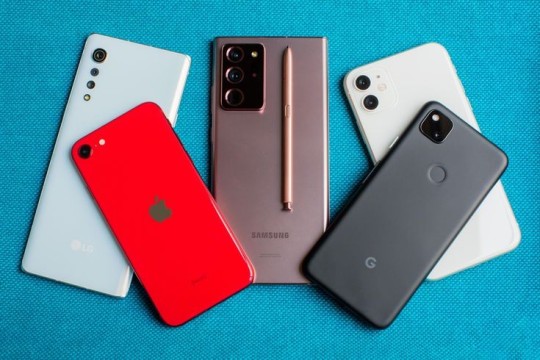
- Smart TVs: Integrate television with internet browsing and streaming services.
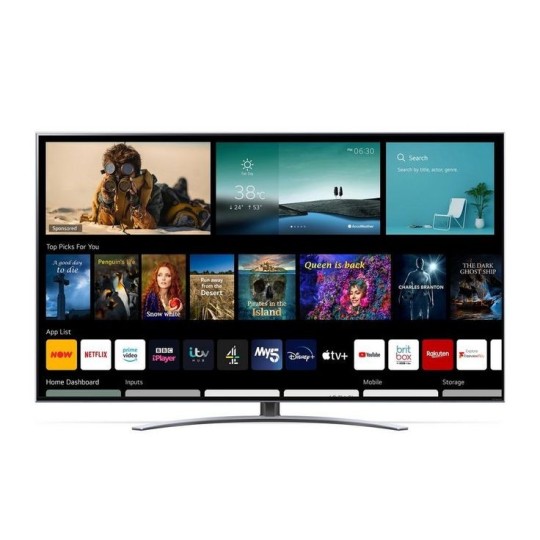
2. SOCIAL MEDIA
Social media has become an essential part of our daily lives, changing the way we communicate and share information. Platforms such as Facebook, Twitter, and Instagram enable users to interact, create, discuss, modify, and share user-generated content. These platforms allow users to interact with a global audience, making social media an effective tool for personal and professional communication.
Examples:
- Facebook: Connects people globally and allows for sharing of updates, photos, and events.
- Twitter: Known for its microblogging feature, where users post short, concise updates.

3. MOBILE TECHNOLOGIES
The proliferation of smartphones and tablets has changed the way we access information and complete jobs. These gadgets have evolved into mini-computers capable of running a variety of apps that were previously limited to desktops. Mobile technology has permitted internet access at any time and from any location, making it important in today's fast-paced society.
Examples:
- iOS: Used in Apple devices such as iPhones and iPads.
- Android: An open-source operating system developed by Google, used by many mobile manufacturers.

4. ASSISTIVE MEDIA
Assistive media refers to technologies and services that help people with visual and reading impairments. These technologies make sure that everyone, regardless of physical restrictions, has access to and benefits from digital material. Assistive media is more than just accessibility; it is also about inclusivity.
Examples:
- Screen readers: Convert text to speech, allowing visually impaired users to interact with digital content.
- Braille displays: Provide tactile output of text for users who are blind.

5. CLOUD COMPUTING
Cloud computing has transformed how we store, access, and manage data. Users can utilize remote servers hosted on the internet to store data and access apps from anywhere in the globe. This tendency has resulted in enhanced productivity, scalability, and collaboration, particularly in the corporate sphere.
Examples:
- Google Drive: Allows users to store files online and access them from any device.
- Dropbox: A cloud storage service that enables easy file sharing and backup.

These developments demonstrate ICT's dynamic nature and tremendous impact on our lives. These trends, whether they improve connectivity, enable accessibility, or revolutionize data management, are altering the future of technology in previously imagined ways. Staying educated and flexible to these trends will be critical to success in the digital age.
Passed by: JEVE ASHLEY C. SUAGA
2 notes
·
View notes
Text
5 Trends in ICT
Exploring the 5 ICT Trends Shaping the Future The Information and Communication Technology (ICT) landscape is evolving at a rapid pace, driven by advancements that are transforming how we live, work, and interact. Here are five key trends in ICT that are making a significant impact:
1. Convergence of Technologies
Technologies are merging into integrated systems, like smart devices that combine communication, media, and internet functions into one seamless tool. This trend enhances user experience and drives innovation across various sectors
Convergence technologies merge different systems, like smartphones combining communication and computing, smart homes using IoT, telemedicine linking healthcare with telecom, AR headsets overlaying digital on reality, and electric vehicles integrating AI and renewable energy.
2. Social Media
Social media platforms are central to modern communication and marketing, offering real-time interaction and advanced engagement tools. New features and analytics are making these platforms more powerful for personal and business use.
Social media examples linked to ICT trends include Facebook with cloud computing, TikTok using AI for personalized content, Instagram focusing on mobile technology, LinkedIn applying big data analytics, and YouTube leading in video streaming.
3. Mobile Technologies
Mobile technology is advancing with faster 5G networks and more sophisticated devices, transforming how we use smartphones and tablets. These improvements enable new applications and services, enhancing connectivity and user experiences.
Mobile technologies tied to ICT trends include 5G for high-speed connectivity, mobile payment apps in fintech, wearables linked to IoT, AR apps like Pokémon GO, and mobile cloud storage services like Google Drive.
4. Assistive Media
Assistive media technologies improve accessibility for people with disabilities, including tools like screen readers and voice recognition software. These innovations ensure that digital environments are navigable for everyone, promoting inclusivity.
Assistive media examples linked to ICT trends include screen readers for accessibility, AI-driven voice assistants, speech-to-text software using NLP, eye-tracking devices for HCI, and closed captioning on video platforms for digital media accessibility.
5. Cloud Computing
Cloud computing allows for scalable and flexible data storage and application hosting on remote servers. This trend supports software-as-a-service (SaaS) models and drives advancements in data analytics, cybersecurity, and collaborative tools.
Cloud computing examples related to ICT trends include AWS for IaaS, Google Drive for cloud storage, Microsoft Azure for PaaS, Salesforce for SaaS, and Dropbox for file synchronization.
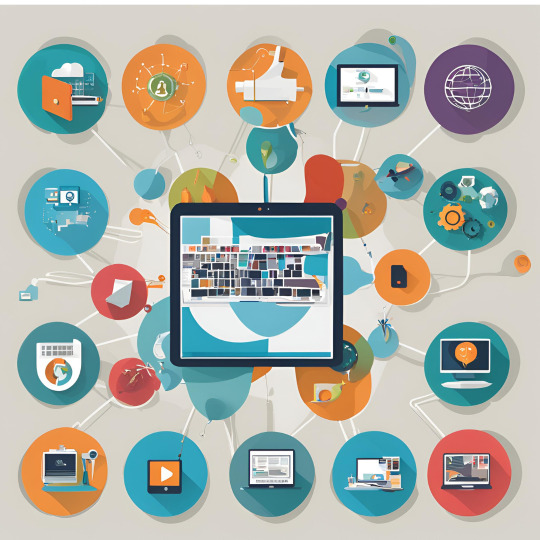
Submitted by: Van Dexter G. Tirado
3 notes
·
View notes
Text
5 Key Trends in Information and Communication Technology (ICT)
The landscape of Information and Communication Technology (ICT) is constantly evolving, driven by innovations that transform how we communicate, work, and live. Here are five key trends currently shaping the ICT sector, complete with examples and photos to illustrate their impact.
1. Convergence
Convergence in ICT refers to the merging of previously distinct technologies and services into a unified system. This trend is breaking down barriers between various media, telecommunications, and IT services, leading to more integrated and streamlined solutions.
Example: Smart Home Devices - Devices like Amazon Echo and Google Nest integrate voice control, home automation, and entertainment in one system.
Before:

After:

2. Social Media
Social media continues to revolutionize how people connect, share information, and engage with content. Its influence extends beyond personal interactions to business, marketing, and customer service.
Example: Instagram for Business - Companies use Instagram to promote products, engage with customers, and build their brand presence.
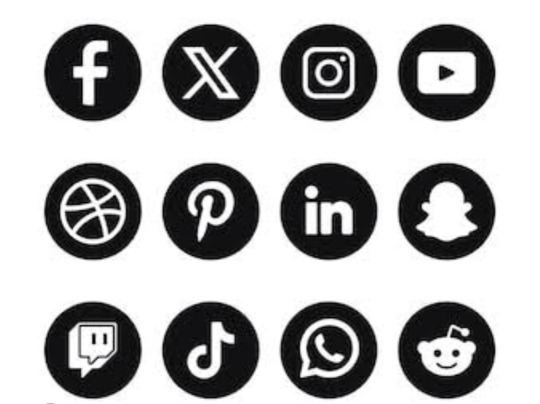
3. Mobile Technology
Mobile technology is at the heart of modern ICT, with smartphones and tablets becoming essential tools for communication, entertainment, and work.
Example: Mobile Banking Apps - Apps like Venmo and Revolut enable users to manage finances, transfer money, and make payments from their smartphones.

4. Assistive Media
Assistive media technologies are designed to help individuals with disabilities access information and communicate effectively, promoting inclusivity and accessibility.
Example: Voice Assistants - Devices like Amazon Alexa and Google Assistant provide voice-activated support for visually impaired users.
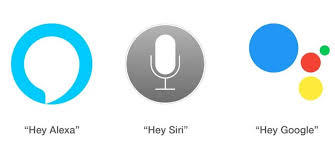
5. Cloud Computing
Cloud computing continues to transform how businesses and individuals store, manage, and process data, offering scalable and flexible solutions.
Example: Google Workspace - A suite of cloud-based productivity tools that includes Google Docs, Sheets, and Drive, facilitating collaboration and remote work.
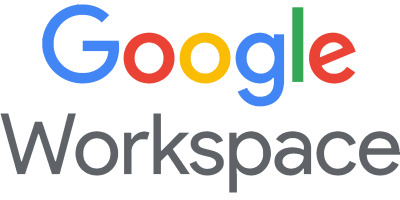
PASSED BY:JAMES JIAN B. ESLABON
2 notes
·
View notes
Text
"THE 5 TRENDS IN ICT (EMPOWERMENT TECHNOLOGY)"
PREPARED AND SUBMITTED BY:
AMIRA DALIPE ( HUMSS 11-3)
"_In the ever-evolving landscape of Information and Communication Technology (ICT), innovation is the driving force behind transformative trends that shape the way we interact with technology and the world around us. From the seamless integration of converging technologies to the dynamic realm of social media, mobile technology, assistive media, and cloud computing, the ICT industry is a vibrant tapestry of innovation and connectivity.
CONVERGENCE, the harmonious fusion of telecommunications, computing, and broadcasting technologies, paves the way for interconnected systems and enhanced user experiences. SOCIAL MEDIA platforms have redefined communication and community engagement, offering a global stage for connection and collaboration. MOBILE TECHNOLOGY, has become an indispensable tool for productivity and connectivity, empowering users to access information and services anytime, anywhere.
ASSISTIVE MEDIA technologies play a vital role in promoting inclusivity and accessibility, ensuring that individuals with disabilities can navigate and interact with digital content effectively. CLOUD COMPUTING, revolutionizes data storage and access, providing scalable and flexible solutions for businesses and individuals alike.
JOIN US on a journey through the impactful trends of convergence, social media, mobile technology, assistive media, and cloud computing as we explore their significance in shaping the digital landscape and driving innovation in the ICT sector. Embrace the possibilities and potential of these trends as we navigate the dynamic world of technology and connectivity."
The 5 trends of ICT, represent a fundamental shift in how we interact with technology and information. For further understanding, here are the TRENDS OF ICT that are present in this modern world:
1.) CONVERGENCE - technological convergence is the synergy of technological advancement to work on a similar goal or task. The convergence trend in the Information and Communication Technology (ICT) involves merging various technologies like telecommunications, computing, and broadcasting to create innovative solutions. This convergence enhances user experiences and promotes a more efficient digital environment.
Moreover, the merging of technologies allows for the development of versatile devices with a range of functions, from communication to productivity. This trend has transformed how we engage with technology, blurring traditional boundaries and opening up new possibilities for interconnected services.
Embracing convergence enables businesses and individuals to harness the benefits of different technologies, improving productivity and creating personalized experiences for users. This trend highlights the dynamic nature of ICT, where integrating diverse technologies leads to increased innovation, connectivity, and efficiency in the digital realm.
2.) SOCIAL MEDIA- It is a website application, or online channels that enable web users to create, co-create, discuss, modify and exchange user generated content. Social media, within the realm of the 5 trends of ICT, has emerged as a potent influence that has transformed our modes of communication, information sharing, and global interaction. It transcends mere personal connections to redefine how we access news, engage with brands, and participate in societal and political dialogues.
The landscape of social media is dynamic, continually integrating with and evolving alongside other technologies. The advent of social commerce allows users to make direct purchases through social platforms, while the emergence of social audio platforms like Clubhouse is reshaping the way we consume and engage with content.
-For additional information about Social Media, I will provide the 5 types itself:
1.)SOCIAL NETWORKING- social networks allows you to connect with other people of the same interest or background. The purpose to share information, interests, and experiences, creating and nurturing relationships through digital platforms. It enables individuals to interact, communicate, and engage with a broader network of people, transcending geographical boundaries and playing a crucial role in modern communication.
2.) BOOKMARKING SITES- These are sites that allows you to store and manage links to various websites and resources, Rather, these are online platforms that enable users to save and organize links to web pages or online resources for future reference. These sites provide a convenient way for users to store and categorize their favorite websites, articles, or content, making it easier to revisit them later. Bookmarking sites often include features such as tagging, categorization, and sharing options, allowing users to manage their bookmarks efficiently and discover new content based on the recommendations of other users. These platforms facilitate organization, easy access to saved links, and the sharing of curated content with a wider audience.
3.) SOCIAL NEWS- These are sites that allows users to post their own news items or links to other news sources. Users can share, discover, and engage with news articles and current events. These platforms enable users to submit news stories, vote on the content, and participate in discussions surrounding the latest headlines. Social news sites rely on user participation to curate and prioritize news stories, with the most popular or relevant articles rising to the top based on user votes. Users can interact with the content by commenting, sharing, and engaging in conversations with other members of the community. Social news platforms like Reddit, Digg, and Flipboard provide a space for users to stay informed, share perspectives, and contribute to the collective curation of news content.
4.) MEDIA SHARING- these are sites that allows you to upload and share media content like images music and video. Users have the ability to upload their media content to these platforms, allowing a broader audience to access and engage with it by viewing, listening, or downloading the files. Media sharing platforms empower users to demonstrate their creativity, exchange life moments, and explore content created by other users. Well-known media sharing platforms include Instagram for sharing photos and videos, YouTube for video content, SoundCloud for sharing audio files, and Dropbox for sharing documents. These platforms serve as essential tools for users to express themselves, connect with like-minded individuals, and explore a wide array of media content.
5.) MICROBLOGGING- These are size that focus on short updates from the user. These posts, known as microposts, are typically limited in length, often to a specific character count, and are designed to be quickly and easily consumed by the audience. Microblogging platforms enable users to share real-time updates, engage in conversations, express opinions, and interact with others in a succinct and immediate manner.
6.) BLOGS AND FORUMS- These subsides allow users to post their content, engage in discussions, and connect with others based on shared interests. Both blogs and forums are examples of how technology has transformed communication and information sharing. They demonstrate the convergence of social media and communication platforms, the rise of mobile technologies, and the increasing use of cloud computing. They also showcase the potential for online communities to connect, share knowledge, and engage in discussions on various topics.
NEXT,
3.) MOBILE TECHNOLOGY- Mobile technology is a broad term encompassing any portable device that allows users to access and share information, communicate, and perform various tasks wirelessly. It's a rapidly evolving field that has revolutionized how we live, work, and interact with the world. The popularity of smartphones and tablets has taken a major rise over the years this is larger because of the device capability to do task that were original sound in personal computers. Mobile technology allows users to access the internet, send and receive messages, make calls, and engage with a wide range of applications from anywhere with a wireless connection.
4.) ASSISTIVE MEDIA- It is a non-profit service designed to help people who have visual and reading impairment a database of audio recording is used to read to the user. It is also known as assistive technology (refers to devices, software, tools, and equipment designed to assist individuals with disabilities in various aspects of their lives.) These technologies aim to enhance accessibility, independence, and quality of life for people with disabilities by providing support in communication, mobility, education, and daily activities.
AND LASTLY,
5.)CLOUD COMPUTING- It is the distribution of computation on the internet or delivery of computing service over the internet, rather. It is a transformative technology that has revolutionized how we access and utilize computing resources. It involves delivering computing services, such as servers, storage, databases, networking, software, and analytics, on-demand over the internet. Instead of owning and maintaining physical infrastructure, users access these resources remotely through a pay-as-you-go model, making it a cost-effective and flexible solution for individuals and businesses alike.
In conclusion, In the dynamic world of Information and Communication Technology (ICT), innovation drives transformative trends that shape how we interact with technology. Convergence merges telecommunications, computing, and broadcasting for enhanced user experiences. Social media redefines communication and collaboration globally. Mobile technology empowers connectivity and productivity. Assistive media promotes inclusivity for individuals with disabilities. Cloud computing revolutionizes data storage and access. Together, these trends create a vibrant tapestry of innovation and connectivity in the ICT sector, offering endless possibilities for a more connected and inclusive digital future, there are so much more to explore and to learn, so deep dive and lets continue in knowing our modern world of ICT!
THANK YOU SO MUCH!
2 notes
·
View notes
Text
1. **Convergence**:
- **Definition**: Convergence in ICT refers to the integration of multiple technologies, platforms, or services into a single, cohesive system.
- **Example**: Smartphones that combine telephone, internet browsing, email, GPS, and multimedia functions.
- **Impact**: It leads to more versatile devices and systems, simplifying user experience and increasing efficiency by reducing the need for multiple, separate devices.
2. **Social Media**:
- **Definition**: Social media consists of online platforms that facilitate the creation, sharing, and interaction with content and user-generated content in virtual communities.
- **Example**: Facebook, Twitter, Instagram, LinkedIn.
- **Impact**: Social media has revolutionized communication and information sharing, influencing personal interactions, marketing strategies, public relations, and even political campaigns.
3. **Mobile Technologies**:
- **Definition**: Mobile technologies encompass portable devices and the infrastructure that enables wireless communication and internet access.
- **Example**: Smartphones, tablets, wearable devices like smartwatches.
- **Impact**: These technologies enable users to access information, communicate, and perform various tasks from virtually anywhere, enhancing connectivity and productivity.
4. **Assistive Media**:
- **Definition**: Assistive media includes tools and technologies designed to help individuals with disabilities access and use ICT effectively.
- **Example**: Screen readers for the visually impaired, voice recognition software, alternative input devices.
- **Impact**: Assistive media ensures accessibility and inclusivity, allowing people with disabilities to participate fully in the digital world, improving their quality of life and opportunities for education and employment.
5. **Cloud Computing**:
- **Definition**: Cloud computing involves delivering computing services—such as storage, processing power, and applications—over the internet, rather than from local servers or personal devices.
- **Example**: Google Drive, Microsoft Azure, Amazon Web Services (AWS).
- **Impact**: Cloud computing offers scalable, flexible, and cost-effective resources, enhancing collaboration, data accessibility, and operational efficiency for both individuals and organizations.
ROSIE MAE,RONDINA,SAIDUNA
2 notes
·
View notes
Text
Hello mga ka sheesh, my co- pre-service teachers and Pauliniatics. This is your newbie blogger Stephan Hashley Javier, 19 years old and not ready to be an adult huhu! I am currently taking a Bachelor of Secondary Education major in Science, and I believe that cram is the best way to finish your activities!
Come along with me and my journey in TTL promising you that this blog is full of sheshableness! :>
THESE ARE MY ANSWER IN OUR FIRST QUIZ IN TTL 1 UNDER MR. MARK FRANCIS ASTOM.
In this blog I will be tackling the different facets in Ict, and will be able to give real life scenarios in each of them. Sit back and read.
Before you start, here is some ice cream, to be more relaxed while reading. <3

____________________
Cloud Computing
Scenario:
It allows me and my fellow students to access updated learning tools from anywhere, making collaboration easier and saving time. Where we can view some digital notes and modules for us to be easy to access. The remote capacity of cloud platforms means that a more diverse range of students can also be reached by educational institutions while lowering costs.
Software
Scenario:
I use software to help me learn more efficiently. This can include games and simulators, flashcard apps, video conferencing, and some online learning apps for , online encyclopedias, or tools like calculators or spellcheckers. For me to make my learning easy. For the past 3 years we have been using some software in our daily life as students, like Microsoft 365 where it is really necessary in the learning process.
Transaction
Scenario:
We are in a transaction everyday we cannot just notice it sometimes, as a lazy person like me I like purchasing online that going to a mall to buy my necessities one of online platforms that I've been using is Tiktok shop, Shoppe, Lazada, Food Panda, and in paying them I am using gcash, gcash is very easy to use and safe also you don't need your wallet too.
Hardware
Scenario:
As an education student the first thing that we need is Gadgets like phones, laptop, printer, wifi, and etc. So it is easy for us to access some online learning access.
Digital Data
Scenario:
As a student I rely more on digital data to have more accuracy, because judgments and actions are made by computers rather than people, so it is greater accuracy in terms of assigned duties. Also it is faster and wider reached because the digital data can contact and provide data to many individuals simultaneously and at the one push of a button, it is really incredibly and considerably faster to use and to access with.
Internet Browsers
Scenario:
Web Browsers allow me to access websites, search for information, shop online, and connect with my friends worldwide. They can translate complex web code into user-friendly pages, making the internet accessible to everyone and easy to use too and it is also relevant to our journey as students and future educators.
Computers and Technology
Scenario:
Last semester in one of our subjects, the teacher required us to create our own research. We need to gather information on renewable energy sources. Computers and technology help us and guide me on how to use computers and technology effectively for our very own research. Computers and technology have really been a powerful tools for research. First, we begin by identifying reliable online sources. We also used search engines to find reputable websites, academic journals, and research papers related to renewable energy sources. We also made sure to evaluate the sources for credibility and relevance. From this scenario, we, student reallt needs to seeks guidance on using computers and technology in making research. Where even the teacher provides information on finding reliable online sources, the computers and technology still hits diff.
Online Access
Scenario;
I noticed this during the pandemic in 2020 where the pandemic started, the Philippines Local Government implemented the Digital Online Class where the students started to rely on Online sources. Then nowadays we noticed that the majority of the population relies heavily on the internet for various aspects of their lives. Country is known for its strong community spirit and commitment to progress. Where online access has become an integral part of everyday life, enabling the people to stay connected, access information, and even on conducting and relying on their businesses.
In the Philippines the local government has implemented a digital infrastructure plan to ensure that every school has access to high-speed internet. This initiative has transformed the country into a hub of digital innovation, attracting new businesses and entrepreneurs who appreciate the convenience and opportunities provided by online connectivity such as online sellings and etc.
The citizens in the Philippines and also all over the world have embraced the benefits of online access in their daily lives. Students can easily access educational resources and participate in online learning programs. Small business owners can reach a wider customer base through e-commercial platforms. Professionals and un-professionals can also work remotely, saving time and reducing commuting expenses. Even healthcare services have become more accessible through telemedicine, allowing people to consult doctors online without leaving their homes that's another benefit of online access.
The community has also leveraged online platforms to enhance social interactions and support local initiatives. Online forums and social media groups have become platforms for sharing ideas, organizing events, and fostering a sense of belonging. The students have been actively participating in virtual seminars because it is easy for them to access, they don't need to travel at all and it's less hassle, where they can freely voice their opinions and contribute to decision-making processes.
Online access has also played a crucial role ti us as we response to emergencies and natural disasters. The local government uses digital communication channels to provide real-time updates and instructions to residents, ensuring their safety and well-being. Also Online fundraising campaigns have been successful in mobilizing support during times of crisis, allowing the community to come together and help those in need.
Online access has become a lifeline for the people, empowering them to thrive in a digital age. The country serves as an example of how a strong digital infrastructure can enhance the quality of life, foster economic growth, and strengthen community bonds.
____________________________________________
Here I am emphasizing Learning process because all that I've mentioned was all interconnected w/ each other. Online access in the learning process, where the teachers can a make use of the internet by proving the students with extra study material and resources such as interactive lessons, educational quizzes as well as tutorials. Teachers can also record their lectures and provide it to the students for revisions which is better than reading from notes. We cannot deny the fact that every student always uses their gadgets so it is easy for them to access their notes when it is digital.
Online access can be applied in various ways in teaching learning in Virtual Classes Online access can be applied in teaching and learning in various ways to enhance the educational experience. Here are some examples is the Virtual Classes where Online access allows teachers and students to connect through video conferencing platforms, enabling live virtual classes, Online Learnings where we can utilize online learning platforms which the teachers can create and share educational resources such as lecture notes, videos, quizzes, and assignments, Collaborative Projects where nline access enables students to collaborate on projects and assignments, even when they are not physically present in the same location where they can also create group chats so they can communicate with each others, Multimedia Content with this the implementer can incorporate multimedia content into their lessons to make them more engaging and interactive, and also in Online Assessments where Online access allows for the administration of online assessments, including quizzes, tests, and exams or diagnostic exam trough google drives, and etc.
2 notes
·
View notes
Text
How did ICT help us?
Over the years it has helped us in many ways, we use it every time we need to know something or if we need information about something we don't know, today in this blog i will talk about how ICT helps us at home, school and in communicating with people.
In school, it helps students give information about something that they want to learn or know, It also became a digital library. This accessibility fosters independent research skills and encourages a deeper understanding of subjects. This also gives students and teachers to have more topics and ideas that can be a wide knowledge. It also promotes teacher and student communication, This seamless communication fosters a supportive learning environment.
At home, it helps online workers or work from home parents that can't leave their kids to someone or are always busy, and it can be used for communication with the other relatives that you can't meet. At home you can monitor your physical health without going to the doctor you can just download an app that can keep track of your health, and can keep track of your daily tasks. ICT also helps us in online shopping if you don't like going to the mall to buy something you need.
In communicating, you can use it to stay in touch with your friends, family and for business. Also a social media platform that lets us post our pics to update, app examples are Facebook and Instagram where you can post pictures and videos. This promotes cross-cultural understanding and facilitates global conversations. And it keeps us updated to news if there's a typhoon or any natural disasters.
In conclusion, ICT can be helpful to anyone and can be more helpful in the future. ICT is not only about devices; it's about how it gives us information and gives us opportunities to connect in our environment too.
What about you? What did ict help you in? Join the conversation now by commenting on your experience! Let's celebrate the transformative power of ICT in building a more connected and empowered future together.
2 notes
·
View notes
Text
How ICT helped me at home, at school and communication with people
ICT helped me a lot in many different ways. It is like having a special tool that makes my life easier and more fun. With ICT, I can use computers, tablets, and smartphones to do all sorts of things like playing games, watching videos, and talking to my friends and family. It also helps me learn new things by giving me access to the internet, where I can find information and do research. ICT is like a superpower that helps me connect with the world and do amazing things!
ICT helped especially through home and assisted me in a lot. ICT enhanced my productivity, communication, and overall convenience in accomplishing various tasks and activities. and the implementation of ICT has undeniably transformed my home.
And ICT helped me especially at school, and i use it through improve access to information. With the advancement of the internet, now i have the ability to research on various subjects, which it weren't possible in the past. And instead of relying on textbooks and limited resources, I can now access many useful information from trustable sources worldwide
ICT has provided me with a platform to express my thoughts, opinions, and ideas to people online. And with social media platforms, online forums, I can share my my thoughts on and see recent topics online. not only it helped me to connect with my family and friends but has also be helpful through research and connect to them worldwide.
In Conclusion, It did helped me alot from enhancing my communication skills and having to know new things everyday to improving my productivity, ICT has become has been a part of my daily routine. And as technology continues to evolve, I look forward to explore all the possibilities and benefits that ICT has to offer
2 notes
·
View notes
Text
TRENDS IN ICT
Here are a few major trends in ICT, or Information and Communication Technology:

1. Artificial Intelligence: AI is rapidly growing and being applied to more and more fields. This includes natural language processing, computer vision, and expert systems.
2. Internet of Things (IoT): This is the network of connected devices that can communicate with each other and exchange data. This is a major trend in smart homes and cities, as well as in industries such as manufacturing and agriculture.
3. Cloud Computing: Cloud computing is the ability to store, access, and process data over the internet instead of a local server. This is a trend in both business and personal computing.
4. Big Data: This is the collection, storage, and analysis of large amounts of data from a variety of sources. This is a trend in industry, and it is leading to new advances in AI and IoT.
5. Cybersecurity: This is a growing concern due to the increased number of data breaches and cyber attacks. This is a trend in both public and private sectors.
6. 5G: This is the fifth generation of mobile communication technology. It promises faster speeds and greater bandwidth, which is a trend in mobile computing.
7. Augmented Reality: This is a technology that superimposes virtual objects onto the real world, allowing people to experience "augmented" reality. This is a trend in mobile apps and gaming.
4 notes
·
View notes